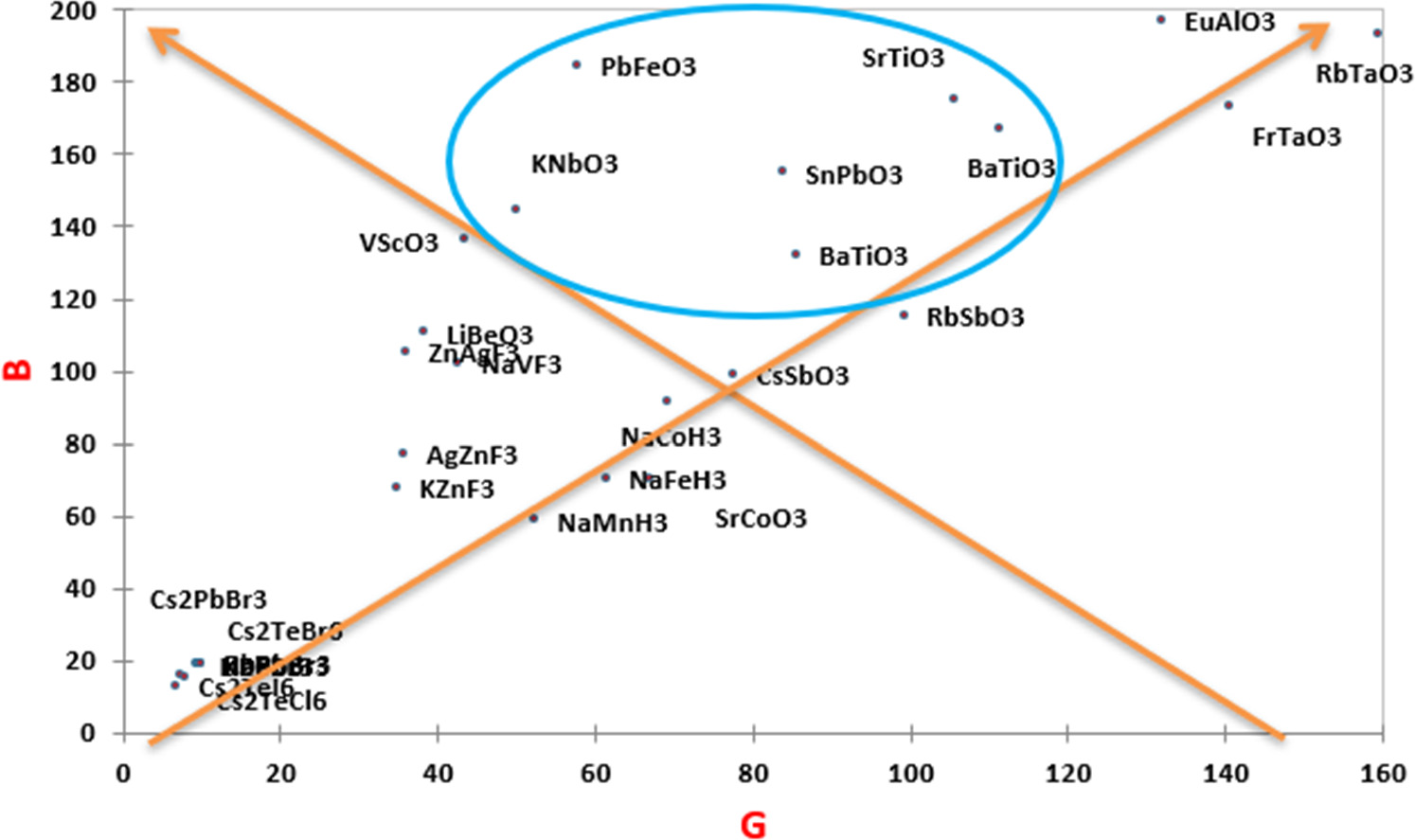https://doi.org/10.1140/epjb/s10051-025-00999-y
Regular Article - Solid State and Materials
Utilizing data mining techniques for the design of structural and mechanical properties of ABX3 perovskites
1
Unit of Research on Materials and Renewable Energies (URMER), Abou Bekr Belkaid University of Tlemcen, Tlemcen, Algeria
2
High School in Electrical and Energetic Engineering ESGEE, Oran, Algeria
Received:
25
March
2025
Accepted:
4
July
2025
Published online:
23
July
2025
The unique structural and physical properties of ABX3-type perovskite compounds have made them central to the development of advanced materials, with potential applications across a wide range of scientific and industrial domains. This work explores the physical and mechanical characteristics of perovskite materials through the application of advanced data mining methodologies to uncover hidden correlations and patterns within large datasets. Principal component analysis (PCA) and partial least squares regression (PLS), as data mining techniques, are employed to investigate and forecast the correlations between the structural and mechanical properties of the materials, specifically focusing on hardness, rigidity, and ductility. The main objective is to identify perovskite compounds with optimal mechanical performance, particularly those with high hardness and rigidity, while maintaining appreciable ductility. In addition, the study highlights the value of multivariate modeling combined with empirical rules to better understand the formability of oxide perovskite structures (ABO3). This approach not only enhances the analysis of existing compounds but also enables the prediction of new perovskite materials with promising properties. This approach not only enhances the analysis of existing compounds but also enables the prediction of new perovskite materials with promising properties. The predictions made in this study are quantitatively validated by comparison with existing experimental and theoretical data, as shown in Table 2, providing a preliminary confirmation of the model’s reliability while laboratory validation remains a future objective. Ultimately, these data-driven techniques provide a pathway for accelerating the identification and optimization of high-performance perovskites, reducing the dependency on extensive laboratory experimentation.
Copyright comment Springer Nature or its licensor (e.g. a society or other partner) holds exclusive rights to this article under a publishing agreement with the author(s) or other rightsholder(s); author self-archiving of the accepted manuscript version of this article is solely governed by the terms of such publishing agreement and applicable law.
© The Author(s), under exclusive licence to EDP Sciences, SIF and Springer-Verlag GmbH Germany, part of Springer Nature 2025
Springer Nature or its licensor (e.g. a society or other partner) holds exclusive rights to this article under a publishing agreement with the author(s) or other rightsholder(s); author self-archiving of the accepted manuscript version of this article is solely governed by the terms of such publishing agreement and applicable law.





